“The Hawker Demon” by Frederick Blakeslee
Frederick Blakeslee painted all the covers for the entire run of Dare-Devil Aces. And each of those covers had a story behind it. Last time Mr. Blakeslee gave us the first in a new series of mismatched time images with planes from the Great War along side present day planes from 1935! This time he returns with another in the series, from the cover of the December 1935 number of Dare-Devil Aces—where a Fokker DVII finds itself pitted against “The Hawker Demon!”
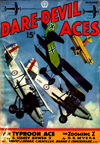 THIS is another scrambled time cover so that you can compare the modern airplane with the war-time ship. Just a werd about the two British ships. The one in the foreground is a Hawker “Audax”, a ship possessing all the qualities required for Army Co-operation work, a good climb and a high top speed. The ship an its left is a Hawker “Demon”. The Hawker “Demon” is a day and night fighter. It has a supercharged Rolls-Royce “Kestrel” engine which gives it a top speed of 160 m.p.h. at 12,000 ft. This ship is the first two-scatcr fighter since the famous Bristol Fighter went into the discard, as a matter of fact, the “Demon” is a modern version of the Bristol.
THIS is another scrambled time cover so that you can compare the modern airplane with the war-time ship. Just a werd about the two British ships. The one in the foreground is a Hawker “Audax”, a ship possessing all the qualities required for Army Co-operation work, a good climb and a high top speed. The ship an its left is a Hawker “Demon”. The Hawker “Demon” is a day and night fighter. It has a supercharged Rolls-Royce “Kestrel” engine which gives it a top speed of 160 m.p.h. at 12,000 ft. This ship is the first two-scatcr fighter since the famous Bristol Fighter went into the discard, as a matter of fact, the “Demon” is a modern version of the Bristol.
The entire Hawker series are beautiful ships and the two pictured here together with the Hawker “Fury” are probably the most beautiful airplanes in the world. For sheer gracefulness and clean-cut speedy lines, they have no equal. But don’t let their beauty deceive you. They are like some poisonous flowers, beautiful but deadly.
Except for the heavy bombers, the service ships of Great Britain are silver.
Now let us imagine a Fokker DVII in combat with one of these ships. Let us look at an imaginary combat report of an imaginary German pilot. . . .
July 7th. I took off with my staffel from Douai at 7:15 P.M. As the morning was exceptionally clear, I climbed as high as I could get, about 16,000 ft. My speed at this height was 95 m.p.h. I saw something white, which rapidly resolved itself into two airplanes flying side by side. The remarkable thing about them was that they were all white and although they were going in the same direction as myself, they rapidly overhauled me. I thought at first I was being blown backward in a head wind while the two ships were in a tail wind. I thought these two ships were Dolphins, for they were some five or six thousand feet above me. However, they overtook me so rapidly, I didn’t know what they could be. Then I saw them dive toward me. I executed a quick turn, and as I came around, one flashed in front of me, going at such a tremendous speed that I could not identify the type. There I saw for the first time that it was a two-seater and of a type unknown to me. Although I was going 116 m.p.h., it passed me as though I were standing still, twin jets of tracers coming from invisible guns. There was no use fighting such a ship, and I therefore fled as best I could. I don’t know how I ever escaped.
I dove and landed just back of our lines.
That, you may imagine is the report.
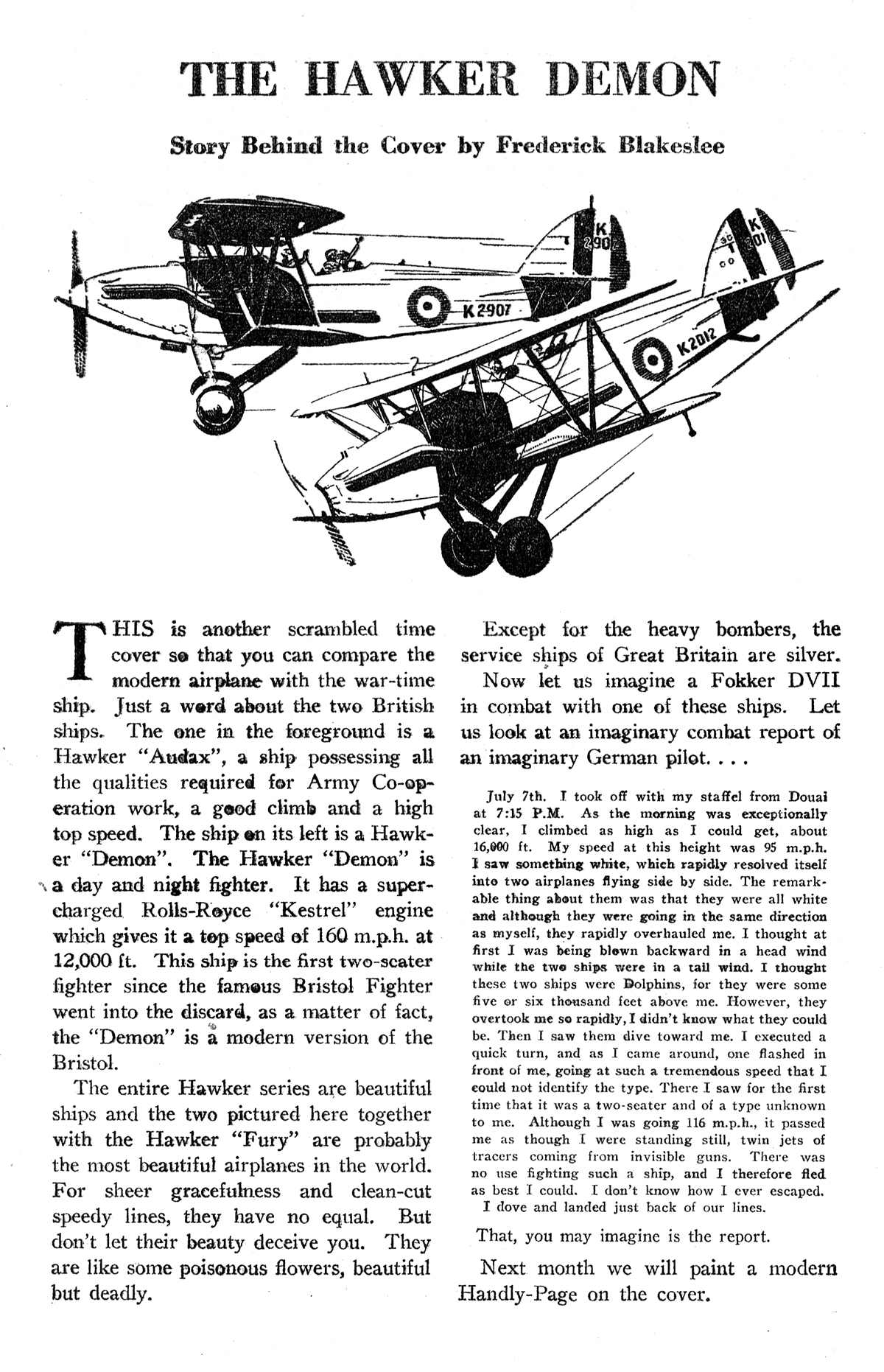
“The Hawker Demon: The Story Behind The Cover” by Frederick Blakeslee
(December 1935, Dare-Devil Aces)
Next month we will paint a modern Handly-Page on the cover.








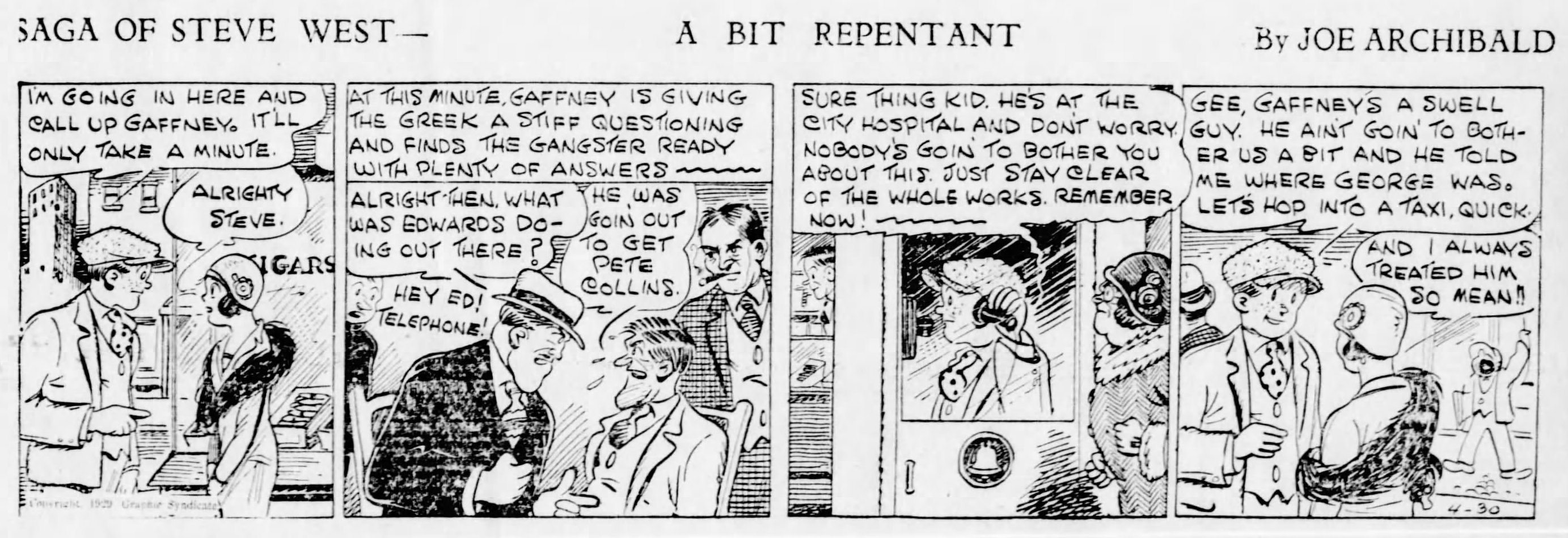





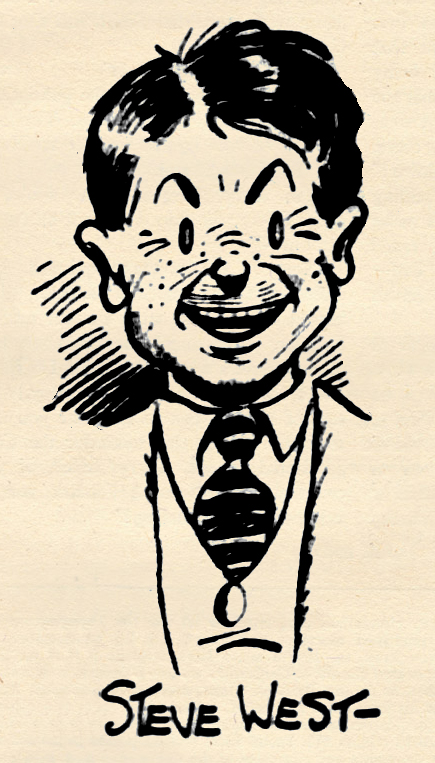 he created his first comic strip syndicated by the New York Evening Graphic. Here he had characters, continuity and action. What he came up with was “Saga of Steve West,” a strip about a young man who leaves the farm and heads to the big city to find his way in life. The principle characters are: Steve West, the young man in question who appears to be in his late teens or early twenties; George Edwards who is Steve’s friend and benefactor and—a bootlegger; Edwards’ secretary and sometimes girlfriend, Helen Wyatt, who has a secret warm spot in her heart for Steve; Detective Gaffney who has matched wits with Edwards in gangland; and rounding out the main cast is Steve’s pal Pete Collins.
he created his first comic strip syndicated by the New York Evening Graphic. Here he had characters, continuity and action. What he came up with was “Saga of Steve West,” a strip about a young man who leaves the farm and heads to the big city to find his way in life. The principle characters are: Steve West, the young man in question who appears to be in his late teens or early twenties; George Edwards who is Steve’s friend and benefactor and—a bootlegger; Edwards’ secretary and sometimes girlfriend, Helen Wyatt, who has a secret warm spot in her heart for Steve; Detective Gaffney who has matched wits with Edwards in gangland; and rounding out the main cast is Steve’s pal Pete Collins.



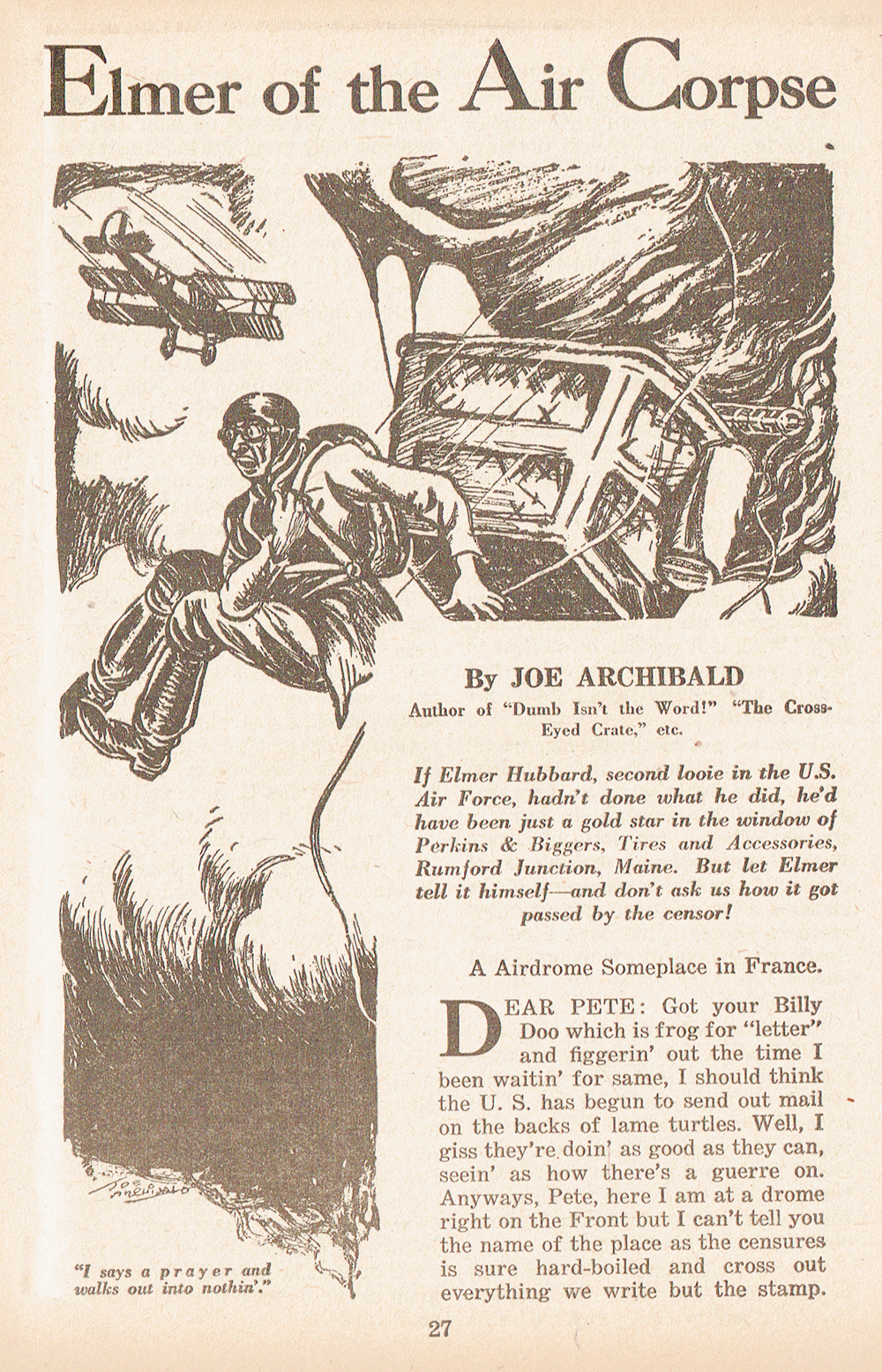
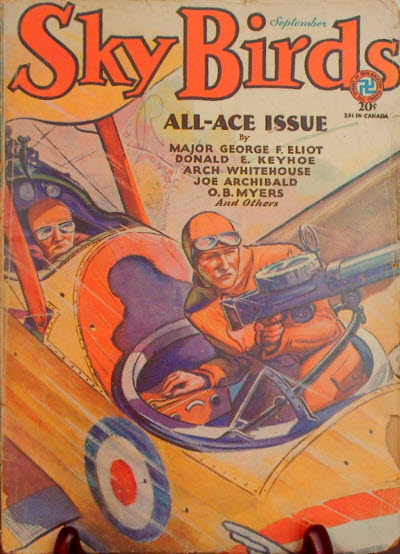 as a bonus, Joe Archibald’s first tale of Elmer Hubbard. Elmer writes his first letter to Pete back in Rumford Junction telling him all about his first days in France as a second lieutenant in the U.S. Air Force with Pokey Cook.
as a bonus, Joe Archibald’s first tale of Elmer Hubbard. Elmer writes his first letter to Pete back in Rumford Junction telling him all about his first days in France as a second lieutenant in the U.S. Air Force with Pokey Cook.











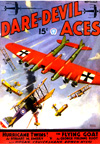



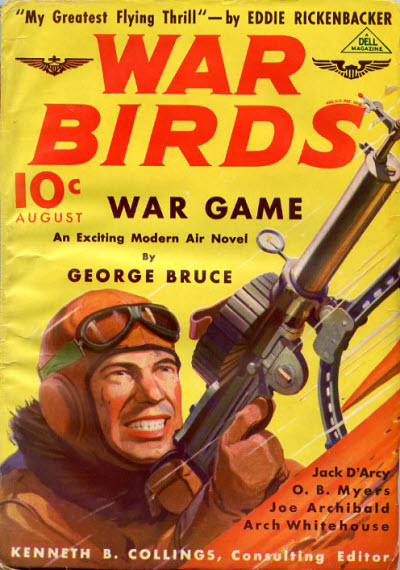 as a bonus, Joe Archibald’s first tale of Ambrose Hooley. No Muley Spinks as yet, but all the other elements are there—the 93 Pursuit Squadron, Major Bagby and Ambrose shooting krauts out of the sky like ducks in a barrel while simultaneously working all the angles. The tale of assumed identity is illustrated by our old friend
as a bonus, Joe Archibald’s first tale of Ambrose Hooley. No Muley Spinks as yet, but all the other elements are there—the 93 Pursuit Squadron, Major Bagby and Ambrose shooting krauts out of the sky like ducks in a barrel while simultaneously working all the angles. The tale of assumed identity is illustrated by our old friend 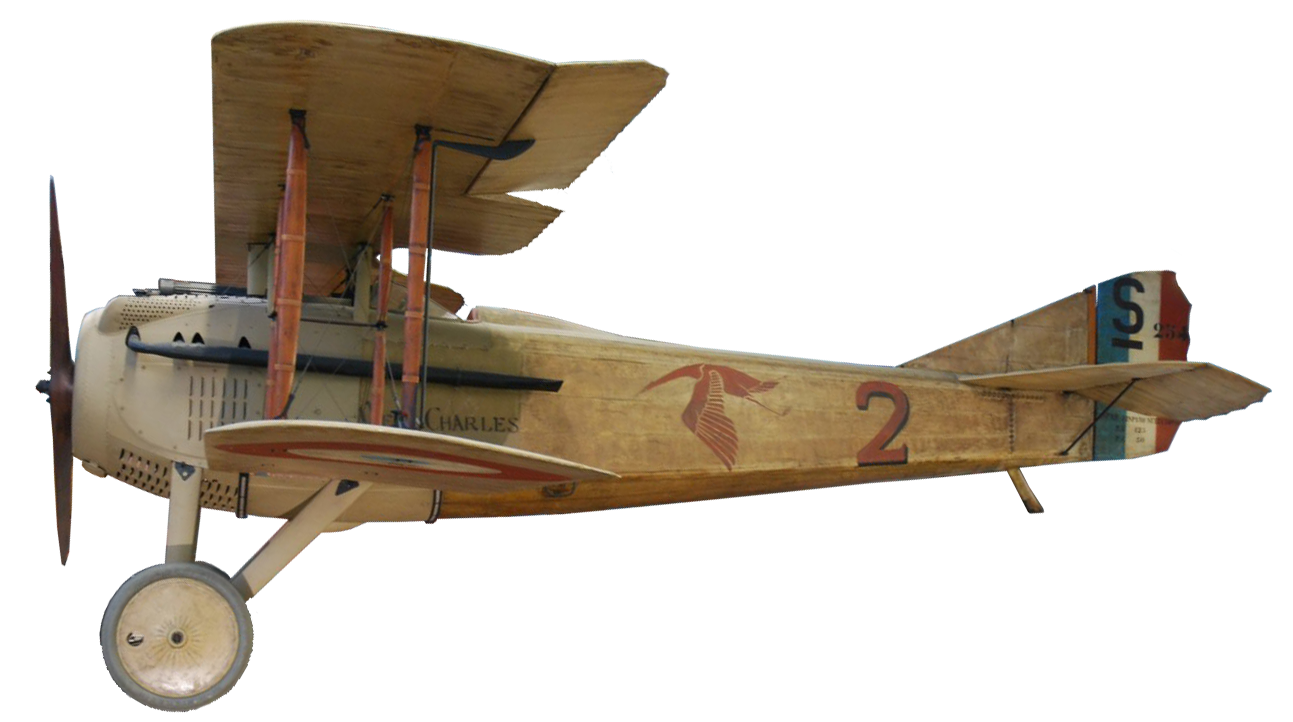
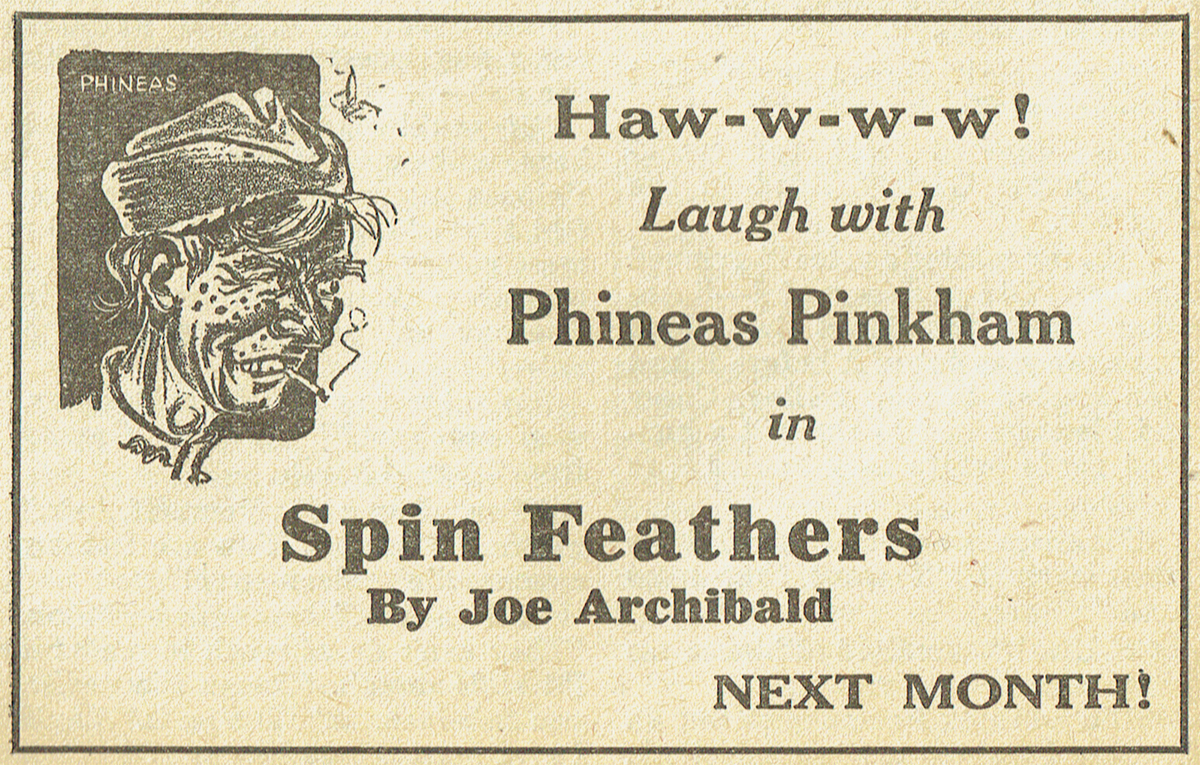
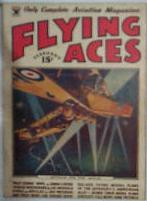 As a bonus, here’s Phineas Pinkham mirthquake from 1934. From the February number of Flying Aces Phineas goes to some inventive extremes to get a captured flyer back in “String ‘Em Back Alive!”
As a bonus, here’s Phineas Pinkham mirthquake from 1934. From the February number of Flying Aces Phineas goes to some inventive extremes to get a captured flyer back in “String ‘Em Back Alive!”